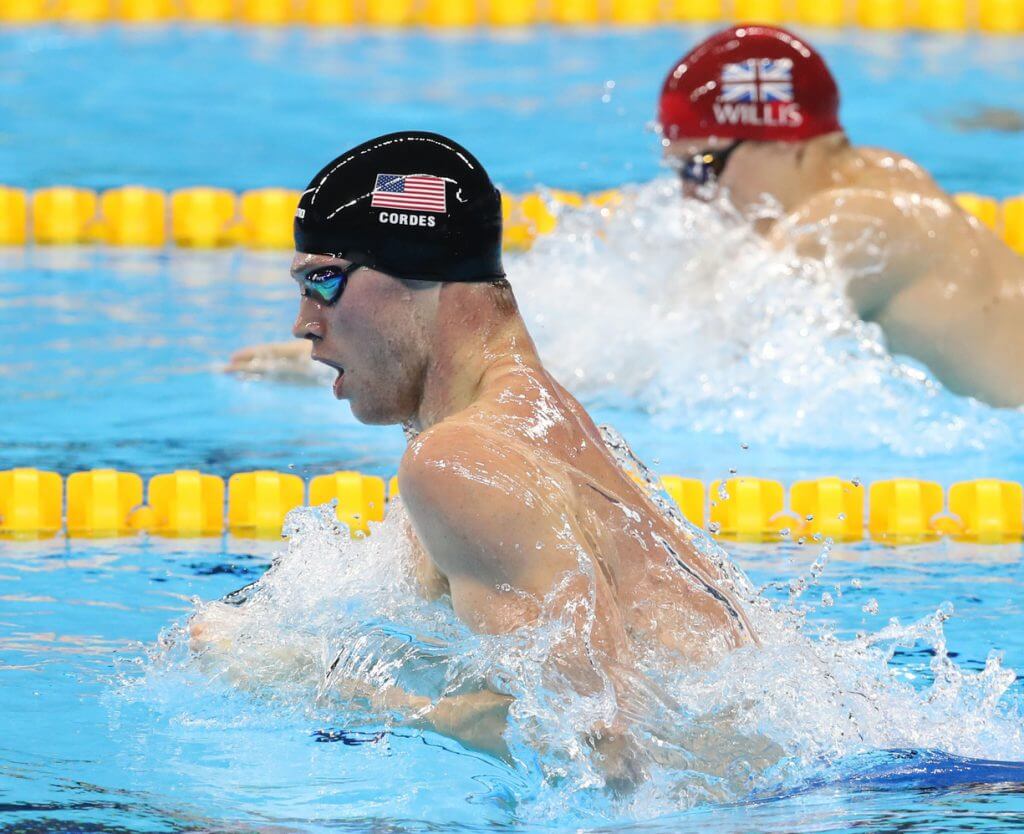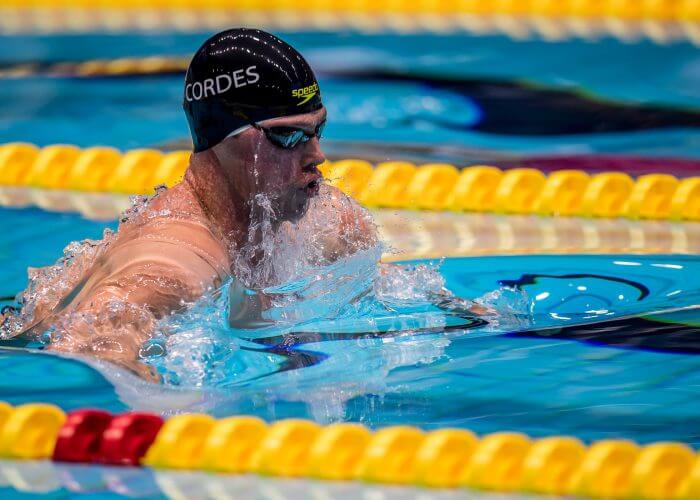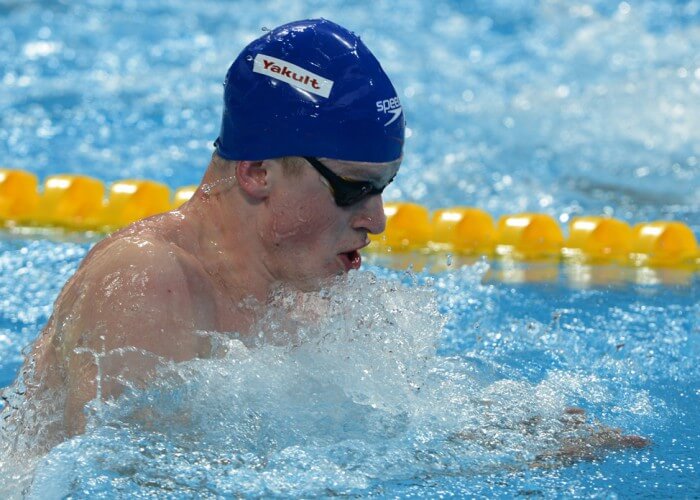Which Breaststroke Style Works Best for You?

By Grant Anger, Swimming World College Intern.
Over the past few years, the swimming world has seen breaststroke technique continually evolve. Swimmers and coaches alike have developed new styles of kicking and pulling, and while substantial differences exist between swimmers, two trends have emerged.
There seems to be two different schools of thought on breaststroke: one focuses on distance per stroke (DPS) and the other on rapid turnover. The DPS style is characterized by a long glide and a mighty pull, while the rapid style is characterized by a high stroke rate.
Stroke Analysis
While technical analysis between the two styles may be confusing, it might help to classify some famous swimmers into these categories. Adam Peaty is the best example of a rapid turnover style of breaststroke; other notable swimmers are Ian Finnerty, Micheal Andrew and Lilly King. Some famous DPS swimmers are Kevin Cordes, Cody Miller and Reese Whitley. Both techniques are quite potent, and swimmers using both have experienced success.
To understand both styles of breaststroke, let’s look at the two kings of both – Cordes and Peaty – and how they differ in their races.

Photo Courtesy: Peter H. Bick
DPS Style
The DPS style is an older style with a focus on efficiency and endurance. Long pullouts and glides are the cornerstones of this style. The emphasis of this technique is to take the least amount of strokes possible to decrease drag and conserve energy.
The long glide and powerful kick help the swimmer cut through the water with ease. The actual recovery is slower as the upper body generates much power, while the glide is longer. A great example of this style is Cordes’ Olympic Trials races in 2016.
The first thing you notice is his long glide – Cordes’ distance per stroke is probably the best in the business. His glide is long yet extremely powerful. He rides the entire momentum from his kick, only pulling when he begins to slow down.
Also, Cordes catches as much water as he can during the pull. This style allows him to shoot past his competition. Even though most of the speed in breast comes from the kick, Cordes is not wasting his pull. He uses all of the strength in his upper body coupled with a strong kick.
Watching his races, you can see how he maximizes his power into each full stroke. Notice how he quickly snaps his ankles together yet places more emphasis on the output of his kick. Analyzing his 100m breast race, you can see that he takes one stroke about every 1.25 seconds and averages about 20 strokes in the second half of his race. Cordes also capitalizes on long pullouts, again maximizing efficiency.
It is important to note that this style works well with swimmers of larger size. Cordes is six feet five inches tall – that’s a lot of body to use. Cordes is an excellent example of how beneficial this style of breaststroke can be by capitalizing on his size and power. This type of breaststroke is also quite effective in the 200 and long course breast.

Photo Courtesy: R-Sport / MIA Rossiya Segodnya
Rapid Turnover Style
Peaty is the most famous forerunner of this style of breaststroke. Using a high tempo has allowed him to smash records that most fans thought inconceivable for at least a few more years. The first sub-minute swim in the 100m breast was in 2001. Fifteen years later, Peaty is making a run at 56 seconds. Finnerty copied Peaty’s style and was the first man to break 50 seconds in a flat start 100-yard breast. This rapid turnover style has led to massive success recently and has become the upcoming trend in breaststroke.
Viewing the video above, we can analyze the style Peaty has implemented. Peaty emphasizes the speed of his recovery, averaging less than a second for each stroke; however, he sacrifices distance per stroke. The rapid recovery is the essential part of this style, powering through to begin the next stroke. Peaty also shoots his hands out exceptionally quick and takes very little rest in the glide.
Notice how his kick is almost a dolphin kick; his legs remain closely together then separate through a quick snap. Peaty also recovers notably high out of the water, as he is forcing his legs slightly deeper for the kick, which generates more momentum. Peaty recovers as soon as the peak of his momentum has passed, capitalizing on every bit of power.
In the more data-driven part of his race, Peaty comes home with about 25 strokes compared to Cordes’ 20. Peaty’s stroke rate is insanely fast compared to the field, averaging under a second for each stroke. All of these factors have allowed this young Uttoxeter native to dominate this stroke.
Which One Works For You?
Typically, a mix of both can be beneficial. Josh Prenot uses a blend of both styles for his 200 breaststroke. He maintains a long distance per stroke for the first three 50s to maximize efficiency, while he drives his tempo higher the last 50 to finish strong. Many swimmers have to use both styles, as very few can do a 100m breast with as much DPS as Cordes. Few to none can hold a rapid turnover for an entire 200 breast, which is why we don’t see Peaty in the 200.
Both of these styles have their strengths, and it’s truly up to what works best for you after some practice. Work with your coach to find what feels best, but don’t be afraid to try something new. With how successful both of these breaststroke styles have become, what’s the harm in experimenting with your technique?
Working with your coach and experimenting during practice and races can only help your swimming career. The only wrong way of breaststroking is forcing a style that does not work best with your strengths or body size. There is no such thing as a perfect technique, which is why we practice. We always have something to improve, and honing your own style is part of what makes swimming so fun.
All commentaries are the opinion of the author and do not necessarily reflect the views of Swimming World Magazine nor its staff.




Noam Laloya